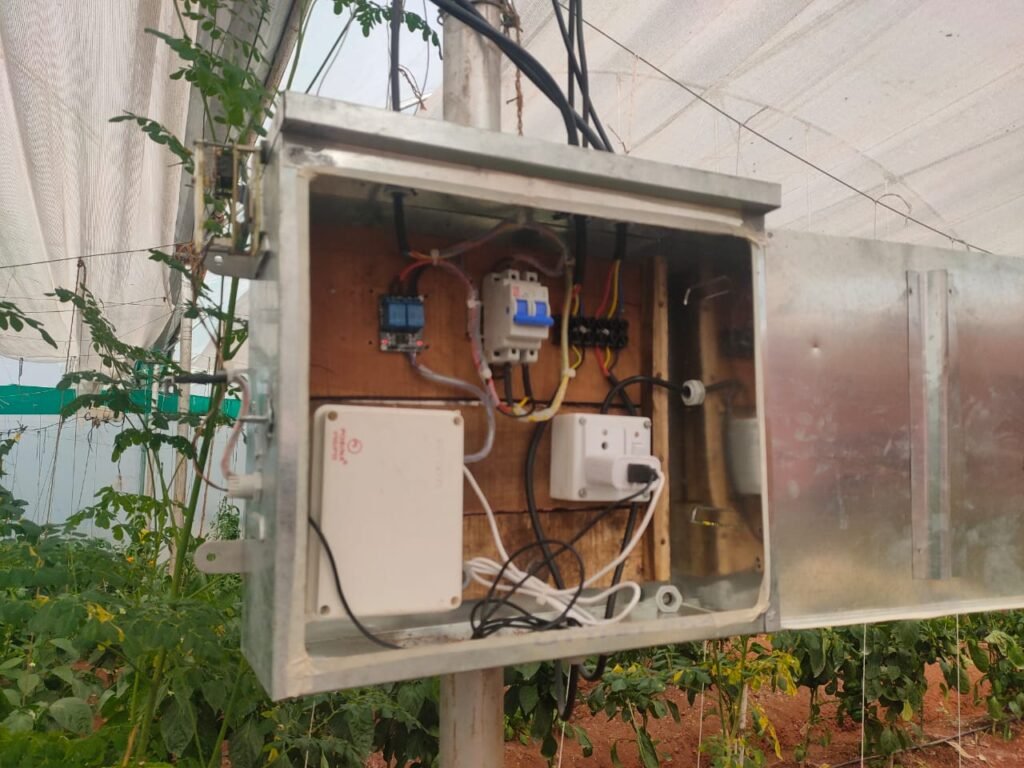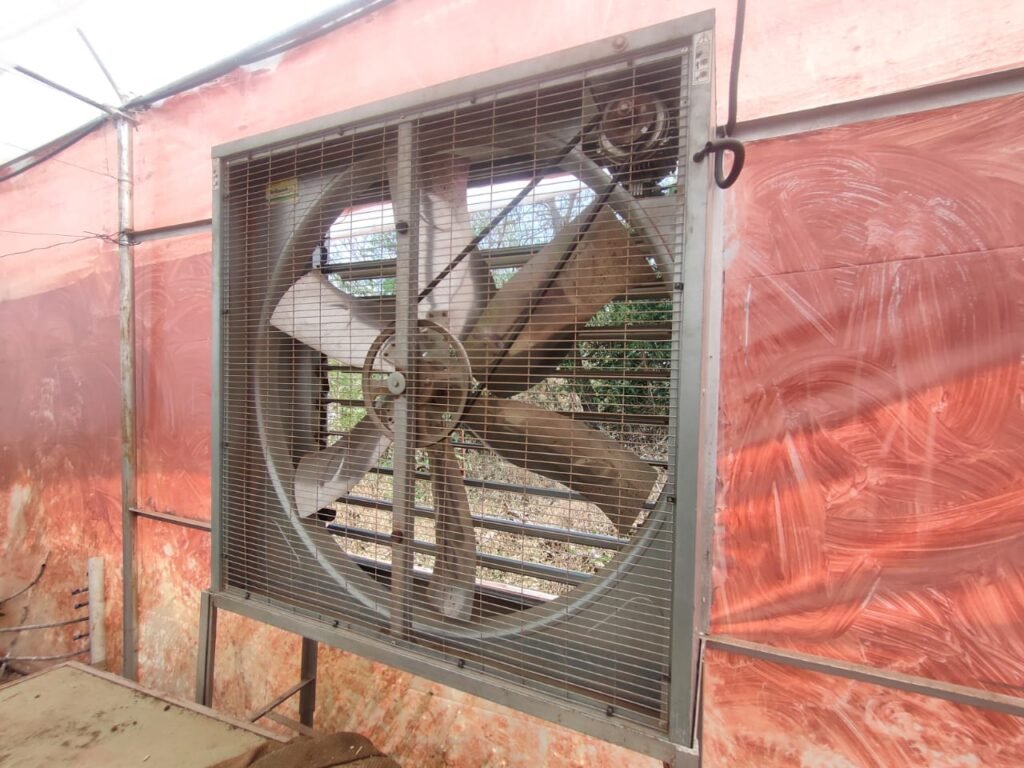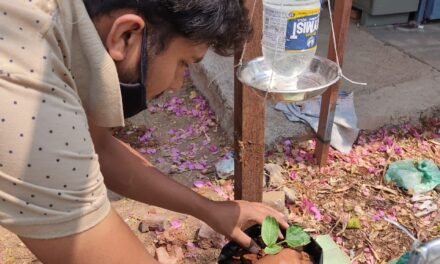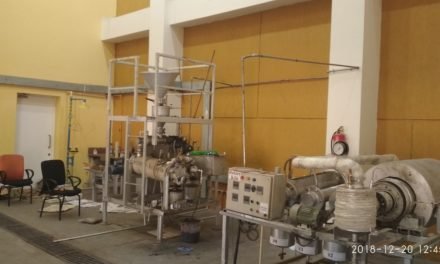Project Background:
In rural areas load shedding is acting as major issue, due to these unwated and untimed powercuts farmers has to face many problems. Polyhouse requires a maintained temperature whole day to sustain its plants but due to these power cuts they could not manage to make it at stable temperature whole day so they faces varies infections on plants within a day, which is being a measure issue. So taking this issue in consideration we at Vigyan Ashram itself are trying to solve this problem i.e. making the polyhouse exhaust fanpad system on complete DC.
Proper ventilation is imperative for a polyhouse to function properly. The ventilation system of a greenhouse provides fresh air to the plants (CO2), helps to control temperature and humidity, and reduces the likelihood of disease. Polyhouse are generally enclosed structures that will not ventilate entirely on their own. In order to ensure that proper ventilation in the polyhouse is achieved, gardeners must install either a passive or powered ventilation system.
Fan systems can provide positive air movement through the greenhouse under all weather conditions. As the fans exhaust the heated air, a slight vacuum is created which draws in cooler outside air through louvers, open doors and cracks.
Aim: To run the fan pad system on Solar powered motor.
The AC fan pad system is comprised of two units of 1.1 KW AC motors, means total 2.2 KW/ hour of consumption. The system runs 6-8 hours/ day which means it consumes up to 15-16 KW of electricity per day. If we calculate it in terms of money it is approximately 150 rupees per day which is very huge amount. To minimize this cost of ventilation we need to switch that system on solar power.
Ongoing Work: Currently one exhaust fan running on solar operated inverter, which saves up to 8 KW AC power supply. While working on poly-house we need to understand the insights of behavior in poly-house for temperature and humidity. So currently I am working on poly-house temperature and humidity data logging to understand the differences at various place. We have installed 4 data loggers for humidity and temperature readings at 4 different places inside of poly-house.
Points need to be consider during the project:
- Retrofitting of DC motor
- Air flow for ventilation
- No. of exhaust fans required for particular area
- Challanges during work
- Future of solar powered polyhouse fan pad system.
- future plan for rectify this project
- Issues in performance
- Why not Solar Inverter with AC supply?
- What are the benefits of this system?
- Point of view of formers towards this project.
Installation of DC motor
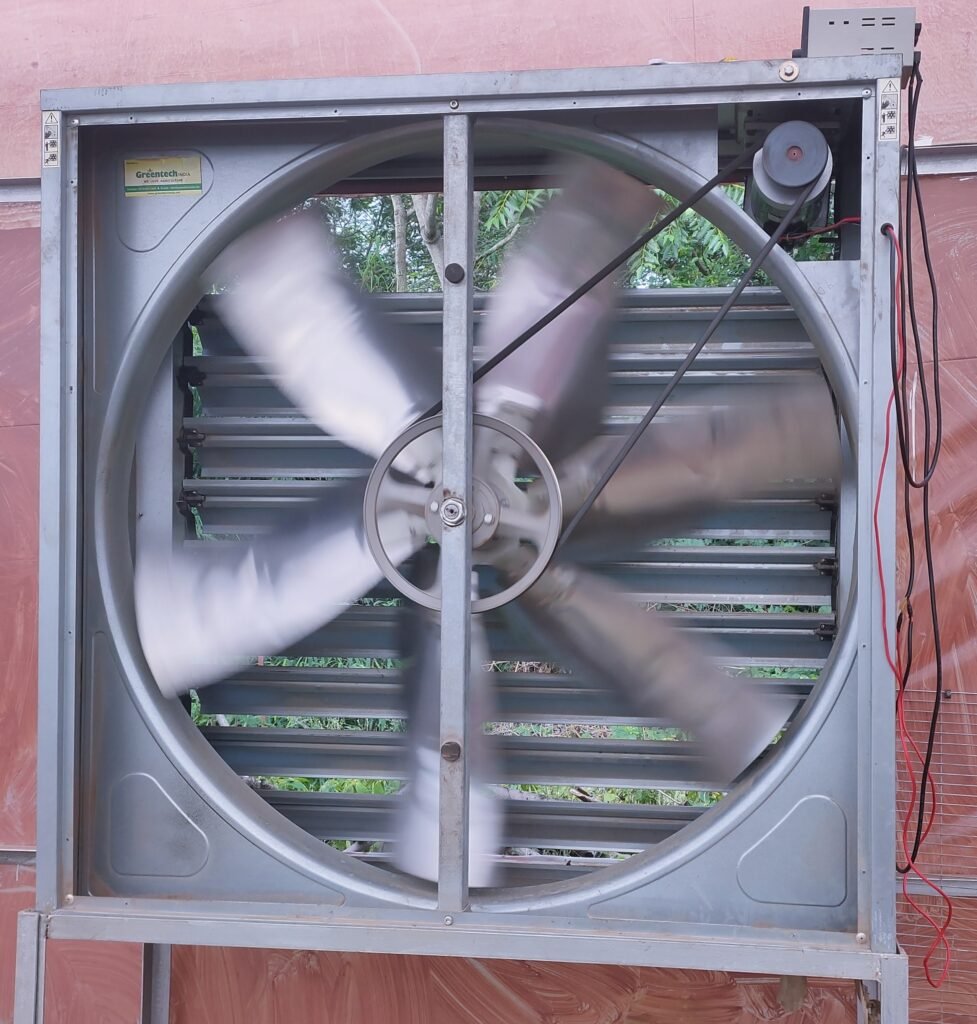
DC motor has been installed on exhaust fan. The fan is moving relatively slow as of AC. AC motor has higher power consumption than DC motor as it rated power is 1100 watt. The rated power for DC motor is 746 Watts is relatively low. The power consumption of DC motor raised some questions because of voltage drop.
Following are the comparative consumption of AC and DC motors:
AC motor consumption,
Current : 6.54 Amp
Voltage : 235 V
Total consumption : 1536 Watts
Rated current : 7.7 Amp
Rated power: 1100 Watts
DC Motor consumption :
Current with load : 5.2 Amp
Voltage with load : 127 VDC & Input voltage: 232 V (DC motor connected through DC drive i.e. AC to DC controller)
Total power consumption: 660 Watts
Rated current : 5.2 Amp
Rated power: 746 Watts
current with no load: 0.53
Ampvoltage with no load : 181 VDC
In case of DC motor, on loading with exhaust fan giving the voltage drop of 127 V DC instead of 180 VDC. while the same motor, running without load is giving 180 VDC.Why is there a drop in voltage?
While selecting the DC motor, AC motor torque test was conducted; the details are mentioned below in the blog link.http://vadic.vigyanashram.blog/2020/03/28/selection-of-a-dc-mot/
The above which was selected was not giving the desired output, so it’s torque need to verify. The torque test performed for DC motor and got the results that motor was of 4.4 N- m which is 2.7 N- m less than requirement.
Readings of DC motor
| Weight | Current | Voltage | RPM | Torque |
| 0 | 0.356 | 180.6 | 1680 | – |
| 3 | 1.04 | 190.2 | 1610 | 1.47 |
| 7 | 1.74 | 187.8 | 1550 | 3.43 |
| 9 | 2.23 | 182.2 | 1523 | 4.41 |
| 12 | 9.12 | 57 | 0 | 0 |
| 14 | 9.81 | 38 | 0 | 0 |
After asking for replacement of DC motor vendor sent some quotations for 1.5 Ho and 2 Hp motor.
In which 1.5 hp motor has required output
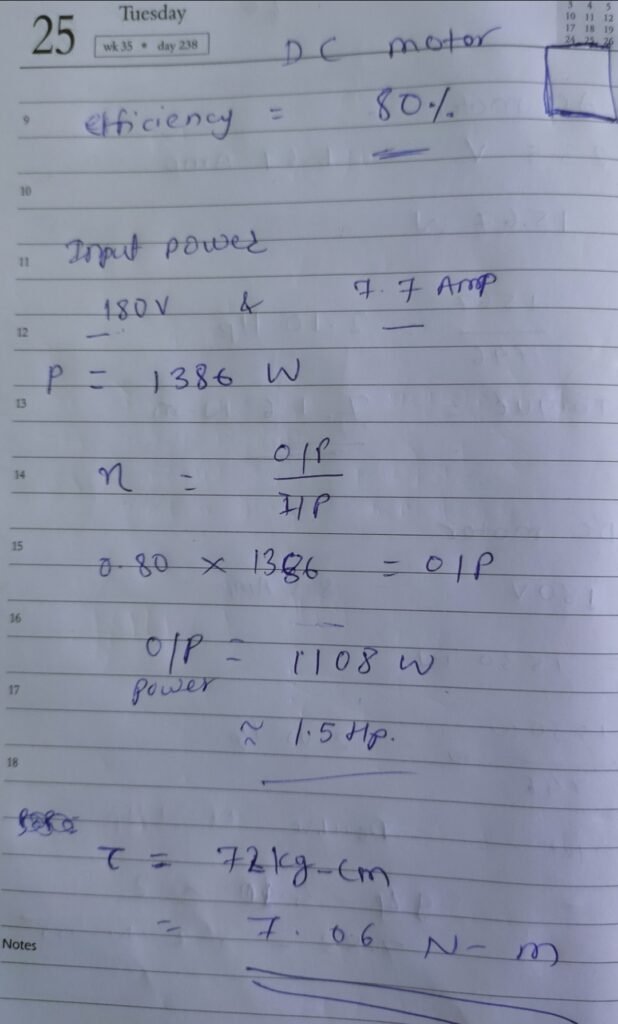
The selected 1.5 HP DC motor was requiring very expensive solar system. So it’s better to propose number of possible solutions for the same project instead of thinking about DC motor only. For the comparison, we have to work on elemination of battery backup as our application does not require battery backup our use of exhaust fan is during day time. The another issue raised on without battery backup system was what if there is completely cloudy days then we will not be able to run those fans but the main thing is, during cloudy days Polyhouse doesn’t require ventilation as the conditions already get maintained due to lower temperature and high humidity. And if it requires we can think of grid supply for those days. So we needed to think about this hybrid solution who can manage our energy needs in any conditions. After further research, VFD controller found to be a perfect solution for our application as it converts DC to AC, so we could simply install the solar system for existing AC motor.
Below is the comparison document of number of possible solutions:
https://docs.google.com/presentation/d/1YYe–0GTydGmHomByMFoPuyj1DJursnCjq8Ye35ns20/edit?usp=drivesdk
About VFD :
A Variable Frequency Drive (VFD) is a type of motor controller that drives an electric motor by varying the frequency and voltage supplied to the electric motor. Other names for a VFD are variable speed drive, adjustable speed drive, adjustable frequency drive, AC drive, microdrive, and inverter.Frequency (or hertz) is directly related to the motor’s speed (RPMs). In other words, the faster the frequency, the faster the RPMs go. If an application does not require an electric motor to run at full speed, the VFD can be used to ramp down the frequency and voltage to meet the requirements of the electric motor’s load. As the application’s motor speed requirements change, the VFD can simply turn up or down the motor speed to meet the speed requirement.
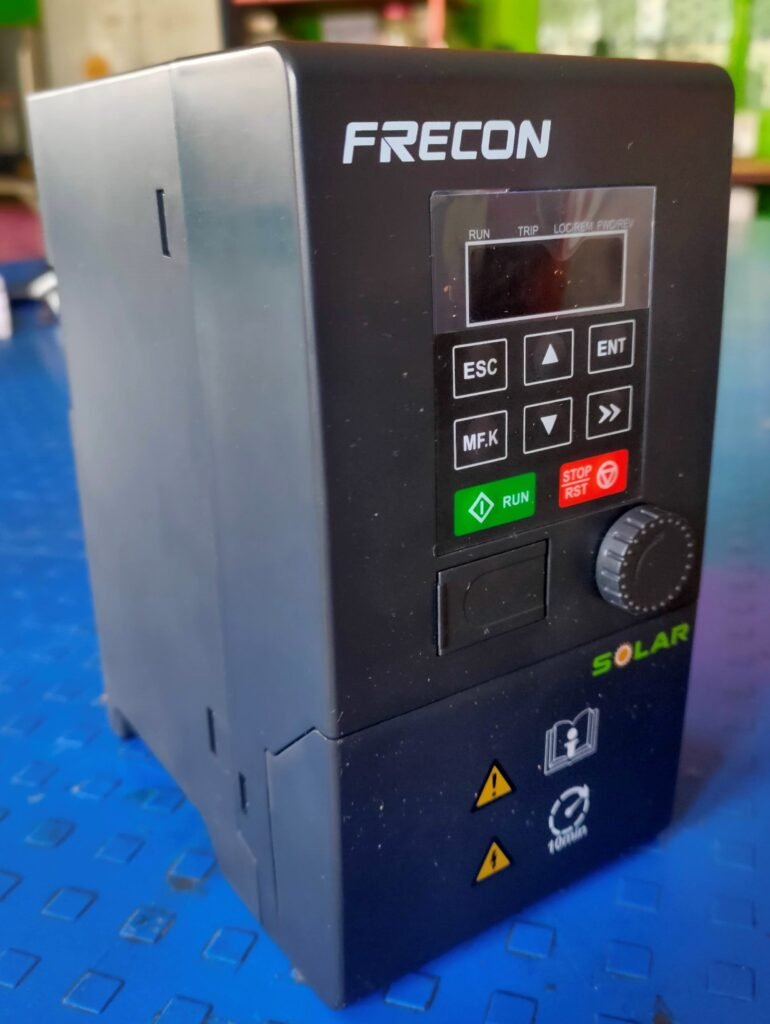
Bill of material:
| Item name | Discription | Quantity | Unit Cost | Total |
| AC motor | 1.1 Kw | 1 | 5500/- | 5500/- |
| VFD | 2.2 Kw capacity | 1 | 9436/- | 9436/- |
| Solar Panels | 300 Wp/ 330Wp | 7 | 5940/- | 41580/- |
| Panel Box | For mounting of VFD and MCB circuis | 1 | 400/- | 400/- |
| AJB Box | For DC bus bar and MCB | 1 | 3500/- | 3500/- |
| DC cables | 16 mm sq | 15 mtr | 110/- | 1650/- |
| DC cables | 6 mm sq | 10 mtr | 36.5/- | 365/- |
| MCB | AC 2 pole MCB for Grid supply to VFD | 1 | 370/- | 370/- |
| MCB | DC 2 Pole MCB for Solar panel supply to VFD | 1 | 850/- | 850/- |
| Total | 63651/- |
This system is 67% less costly than SELCO solar system with DC motor and solar system solution. Hence this system is economical and easy to use.
Installtion:

Power consumption after installation of VFD is nearly the same as of on grid supply. The self consumption of VFD observed is only 10 to 15 watt because it has cooling fan and it’s other working components. The total consumption observed 1549 to 1552 watts and the earlier consumption was 1535 to 1537 watts.
Now we need to observe the consumption of whole system using with solar panels.
Installation of solar system:
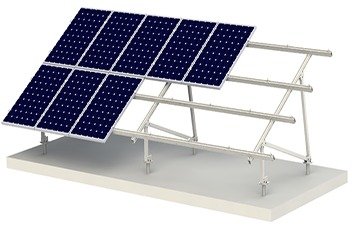
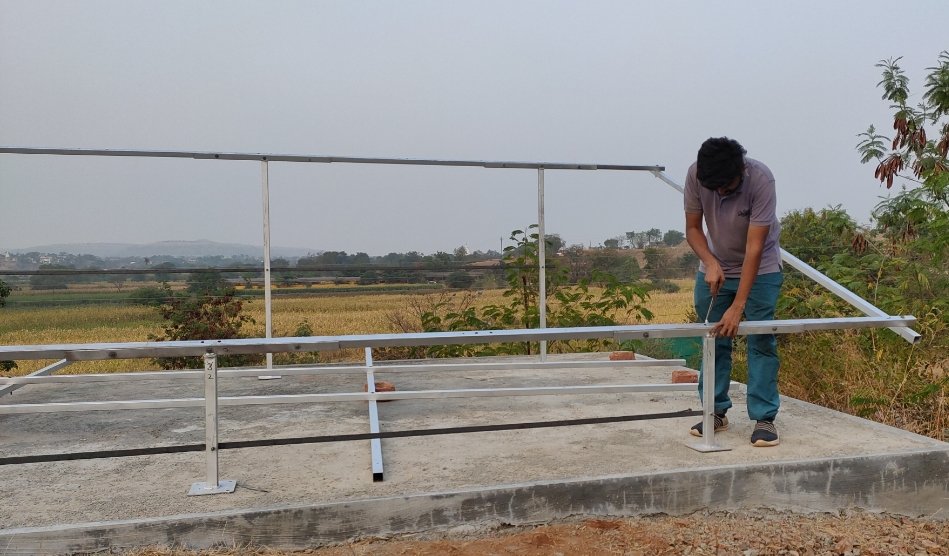
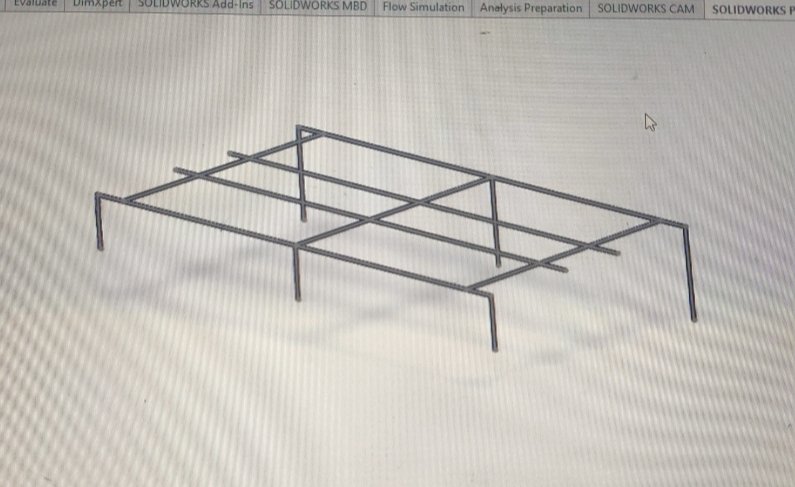


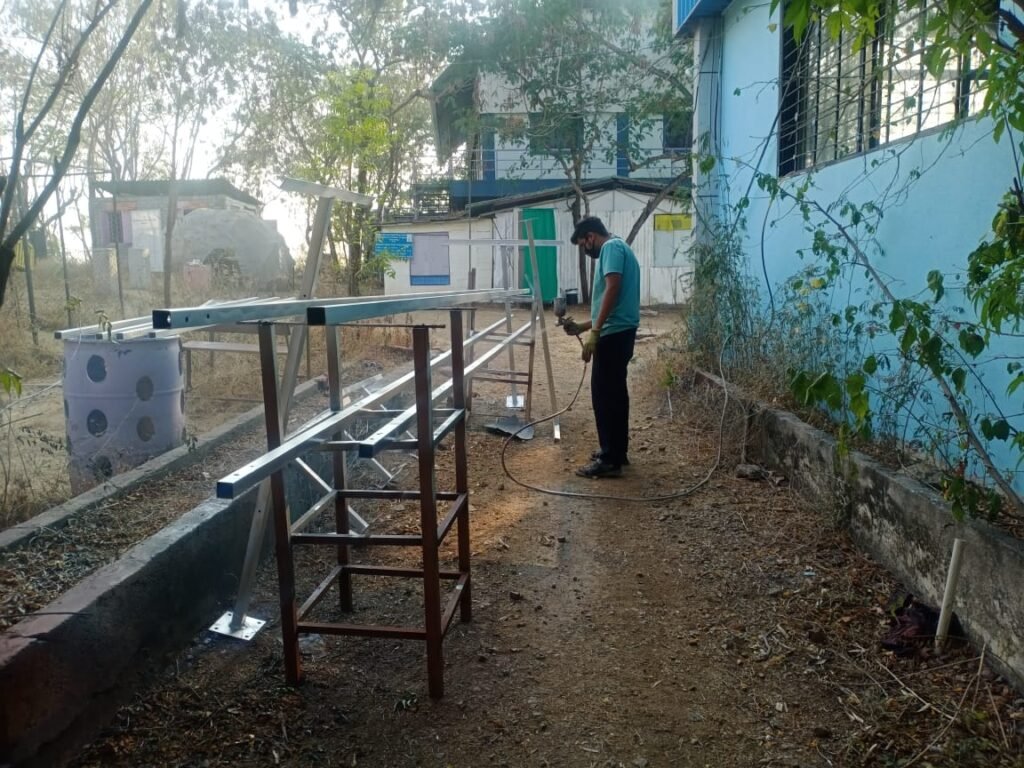
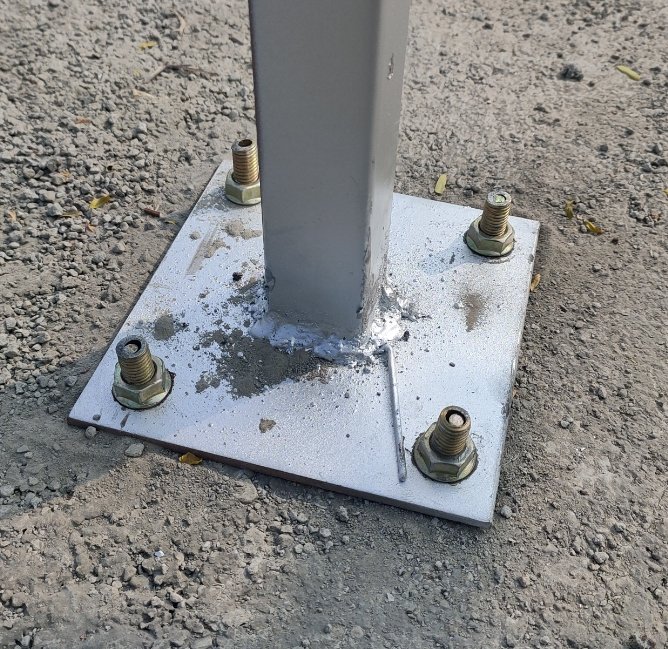

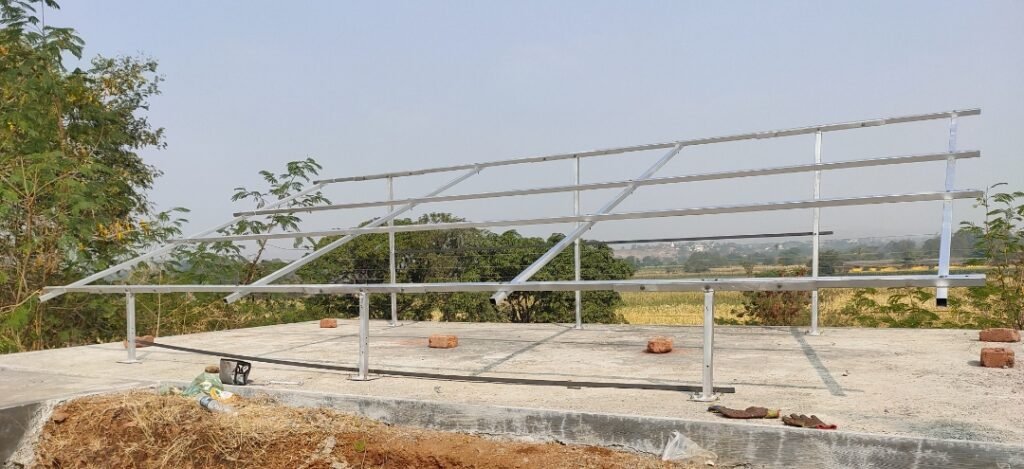
This structure is fully nut bolt joined structure and partially welding involved. Due to large area requirements instead of designing 2 strings for 2 different systems, I designed the single frame structure for both the system. Single frame structure has its benefits like, saves our space, less material requirements, high strength due to more number of support and easy installation. The structure is mounted on concrete surface and it’s fitted with high strength concrete fasteners which are usually used in slabs. The structure has vertical and horizontal support to constraints the movement of structure. All the axis of movement have been constarined of this structure so no movement so no accident.
After the reinforcement of MMS into the concrete, solar panels were mounted on it. The solar panels mounted with nut bolts of 6mm diameter.
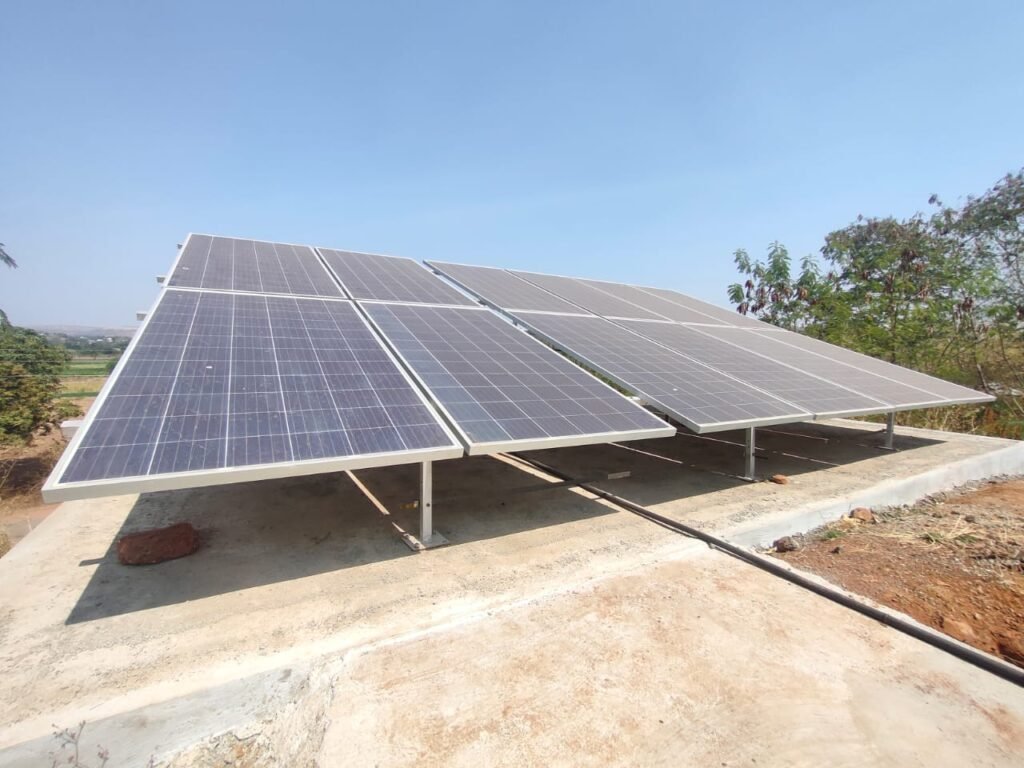

Automation panel box 
Exhaust fan 
Temperature humidity control automation 
wiring
Please click on the below link know about market potential, stakeholders, ROI,PP, long term plan of replication:
https://docs.google.com/document/d/1L-q_YphbXEE_tgGB5HQOgBO2zw9HkMHw090pGL3PUhU/edit?usp=sharing



